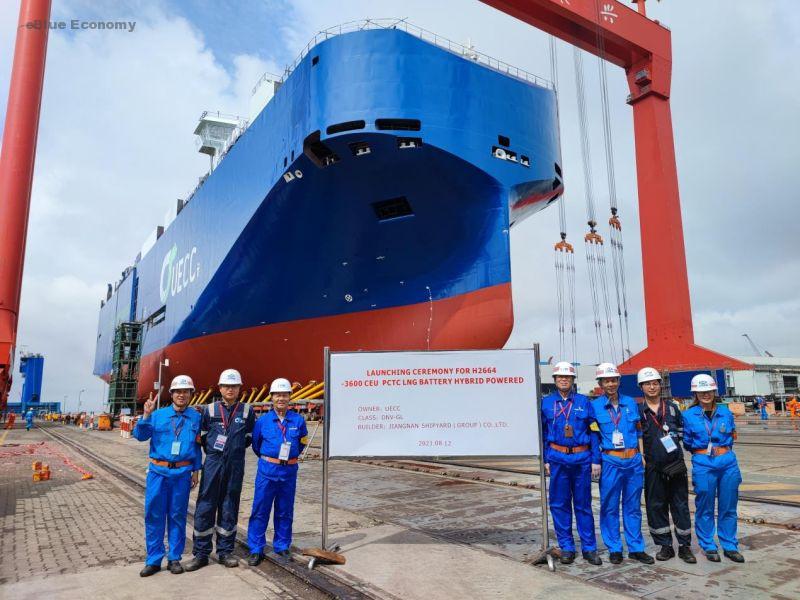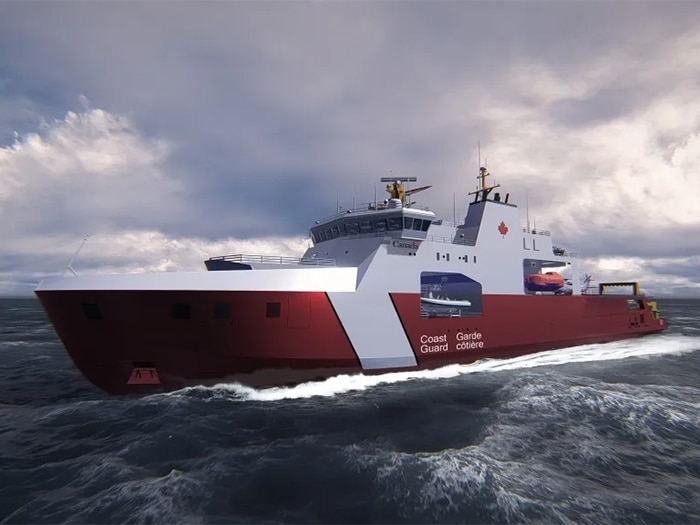UECC’s ambitious effort to upgrade its fleet with low-carbon vessels remains on track with the launch this week of the second in a series of three LNG battery hybrid newbuilds at a Chinese yard.
The latest newbuild pure car and truck carrier (PCTC) was launched at Jiangnan Shipyard just over a year after the first steel was cut as the yard and shipowner have overcome manpower and logistical challenges due to the Covid-19 pandemic to maintain the delivery schedule.
Hull number H2664 hit the water in a launch ceremony at the Shanghai yard on 16 August and is due for final delivery along with the third vessel in the first half of 2022, while the first unit launched earlier this year is set to be delivered later this autumn after final commissioning.

Front-runner
UECC has been a front-runner in adopting hybrid technology for the car carrier shipping segment in pursuit of lower CO2 emissions, building on a pair of pioneering dual-fuel LNG-powered PCTCs that have now been in commercial operation for the past four years.

“The intention was to further improve on these two E-class vessels, Auto Eco and Auto Energy, by rationalizing fuel consumption through the use of hybrid battery power,” explains head of ship management and newbuilding Jan Thore Foss.
He says the yard “responded to the challenge” by employing Jiangnan Shipyard Group’s internal design firm to carry out engineering work to adapt the hybrid technology, supplied by WE Tech of Finland, for the ground-breaking new build project.

Technical challenges
“There have been a number of technical challenges to overcome, such as streamlining the shaft generator for a dual-fuel engine and determining whether the bow thruster could run on battery power when entering and leaving port,” Foss adds.
The shaft generator enables the vessel to recharge its batteries while at sea so it can run the bow thruster in/out of port solely on battery power, contributing to reduced emissions in line with port authority requirements.
Battery power on the new vessels will improve operational efficiency and further reduce emissions through peak shaving, in addition to handling partial accommodation load and driving auxiliary equipment.
The use of a battery hybrid solution will enable UECC to exceed the IMO target to reduce carbon intensity by 40% from 2008 levels within 2030.
Emissions of carbon dioxide will be reduced by around 25%, SOx and particulate matter by 90%, and NOx by 85% from the use of LNG, while the newbuilds will also meet the IMO’s Tier 3 NOx emissions limitations for the North Sea and Baltic Sea.

Pandemic issues
Foss says the new build program remains on schedule despite significant logistical hurdles due to lockdown and travel restrictions that have led to difficulties in procuring equipment from global suppliers and hit manpower capacity for construction work, which requires hundreds of workers.
“The newbuilds were contracted in 2019 just before the pandemic broke out so fortunately, we had equipment vendors in place, but the main challenge has been getting service engineers into China,” he says.
“We were initially forced to set up a temporary site team comprising solely Chinese nationals to get the newbuild project moving as flights into the country were canceled. It has also been necessary to use digital tools such as conferencing apps to supervise the project remotely.
“The yard has though performed exceptionally well to reallocate labour resources to maintain progress on the project.”
Once delivered, the newbuild trio will give UECC five eco-friendly PCTCs out of its 17-vessel fleet as its focus on sustainable operations is set to give the leading shortsea carrier a commercial edge in the green shipping future.


















